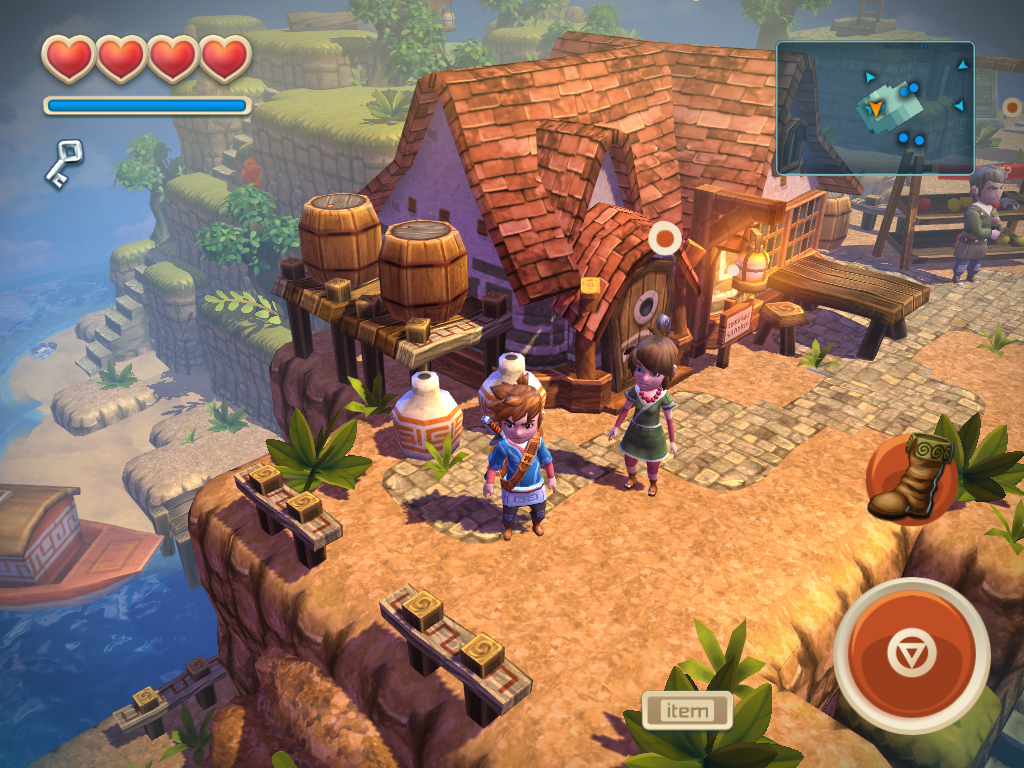Oceanhorn even though seems to be inspired from Zelda; it is fantasy story full of adventure, battle and exploration. It is completely an interlaced story.
What you need to know about the game:
This game is about the story of a boy, who in search of his missing father is exploring everything about a monster named Oceanhorn. The game has exceptional narratives and has the capacity to draw the complete attention of the player and provide them with enough motivation for the actions that needs to be taken by the characters in the game. The game has been laced with high quality graphics and music to keep the player engrossed. Currently the game has been made to be compatible with every iOS and has been priced at $8.99 US.
What’s the story of Oceanhorn:
This is game all about a boy, who has been send to a completely different world with only his father’s book of his travel and a necklace of his late mother. The boy is in search of his father, who has gone missing after he went searching for Oceanhorn. The game starts with the boy meeting a hermit who guides him about collecting 3 sacred and holy emblems. In order to collect these emblems the character will be travelling across different islands and enters the exciting part of sailing and surfing.
The character can sail across different islands my developing a course of sail in the map and following the route. The water journey has been kept exciting with constant entry of attackers and enemies and other hazardous conditions. Just like most of the other games, it’s about shooting all the enemies in order to save your lives and health.
So what’s exciting?
Being a game based on adventure, exploration becomes the main exciting part. It’s up to the player to select their course of action. The choice can be difficult task as the game has not been designed to give any hints of which course or path to consider. In order to collect the emblem, player might have to repeatedly come back to same areas again and again. Interaction is the only means to collect ideas and information. These hints will enable the player to search a new area of probably complete a new task.
Puzzles have been incorporated to test the mind of the player as solving them can help to either collect treasure or get into a new location. Getting a puzzle solved is an exciting task but if it takes lot of time, might even frustrate certain players. Players need not get confused with puzzles to be main problem solver as they might to be even there just to confuse.
The enemies in the game has been developed tactfully like boss battle is about skills, player need to use their skill to kill these boss as they have to attack them for a long time and in the end can even get helpless.
What could be different?
The controls have been given well but the swipe control might occasionally trouble you and frame rate issues need to rectify.
In the end, this game will give you all the excitement you need to restore the empire of Arcadia when compared to other games at much higher costs.








